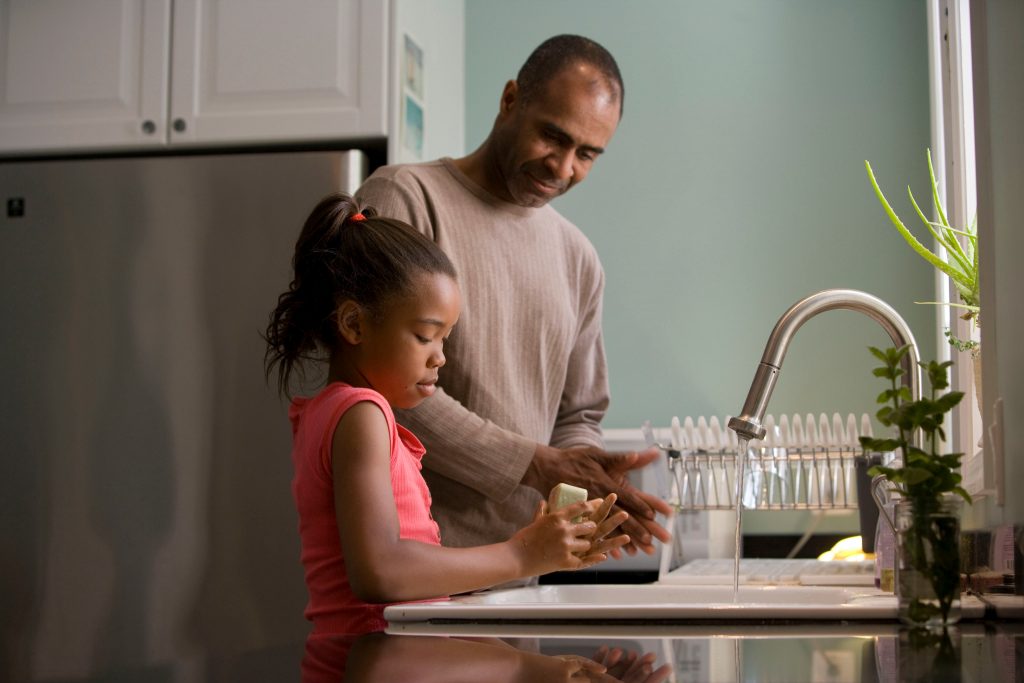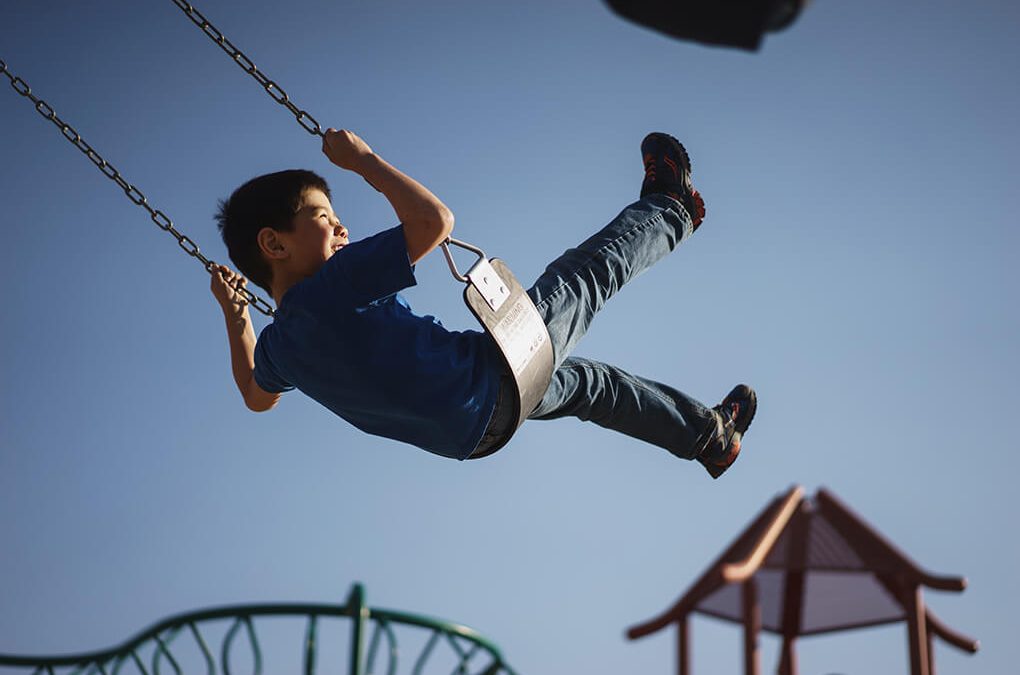This is such a strange time with social distancing and all that is happening. As a community, we are all struggling to find a sense of normalcy and peace amid a period filled with stress, worry, and increased practical concerns. This can be especially hard with many of us adjusting to schools being suspended and now having our kids at home.
Having this huge new daily responsibility of managing our children’s day, on top of everything else we are dealing with, can feel overwhelming.
With Social Distancing I’ve Been hearing from clients this past week, it seems a common theme of difficulty is, “I don’t want to stick my child in front of a screen all day, but it feels impossible to fill their day.”
As a parent, whether you are now managing the additional transition of starting to work at home, or still juggling the responsibilities of the household with the kids now being home, this can feel especially difficult.
The truth is a regular school day addresses many important needs for children. These are needs we don’t necessarily think about, but naturally occur throughout our children’s regular routine. For example, just by dropping off our children at school, we safely assume they are getting access to educational activities, some exercise, social time, and creative outlets.
Of course, these areas of need are important for children. With this sudden shift of staying home, it feels impossible to fill our children’s day the same way as a regular school day.

We may feel a lot of pressure to entertain our children with activity after activity, all while trying to manage our own daily responsibilities.
Luckily, there are many things we can do to promote an overall “healthy,” day for our children, while easing the pressure and anxiety we may be feeling. In this blog, I’ll briefly describe the importance of a few key areas we can focus on with general types of child-friendly activities for each section. We are also starting what I hope to be an ever-evolving comprehensive list of different activities/resources we can use with our children. The goal is to intersperse activities from each of these areas throughout the day. Preparing some ideas for the day and giving your child some choices along the way can help you feel you have a ‘template,’ for what the day can look like, and help you feel prepared to keep your child busy and engaged in an enriching way.
Before jumping in, there are two things important to remember:
First, you are not superhuman. Putting undue pressure on yourself, being hard on yourself for areas of struggle, or holding yourself to an unattainable standard does not help you or your family adjust to this difficult time. Trying to be kind to yourself, finding outlets for your own emotions, and prioritizing your own self-care, can go a long way to bring more calm to your family.
Second, trying to incorporate a little of the following areas in a loose routine can help ease the pressure you might be feeling and help your children feel more secure as to what to expect and what they can do to help. You can use the list of activities/resources here, or add your own, to have a “stash” of options you can draw from to help fill your child’s day. The specific activities each day can fluctuate, and you can give your children some choices of what they would like to do during each period of time. The goal is to try and incorporate a few activities from each section throughout the day.
Our team of therapists and psychologists in our Simi Valley Therapy Practice emphasize the importance of being kind to yourself. How you treat yourself and the self care you give yourself will give you the energy and resources to provide to your children.
Make sure to check out our full list of activities and resources to do with your child while social distancing!

Physical Needs while social distancing
Children have a lot of physical needs. This category includes things like nutrition, sleep, and hygiene. These areas are easy to neglect during periods such as this where there is less structure. It is important to make sure part of your child’s routine includes continuing to get a good night’s sleep, maintaining a nutritious diet, and keeping up healthy hygiene habits such as showering, brushing teeth, etc. If you have a teenager or pre-teen, it may be especially tough to maintain these areas, but you will find value in being able to set boundaries and encourage your child to pay attention to these aspects of their lives.
Of course, your child also needs movement. You probably know this just by the fact they may be running all over the house! With the limitations in place, it can be hard to think of activities which can fill this need while you are at home social distancing.
Finding activities at home that promote movement can help provide an outlet for energy, decrease irritability, and encourage a smoother transition to “sit-down” activities. Here are some examples, with a more comprehensive list here!
Inside Activities
- Wall pushes (Have your child place their hands flat on the wall, and then push as hard as they can!).
- Create an obstacle course (ex. Jump over the pillow, crawl to the couch, walk backwards to chair, etc.).
- Have a pillow fight!
- Do some child-yoga.
- Simon Says
- Have a dance party
- Play freeze dance
Outside Activities
- Take a sensory walk (Count how many different sounds, colors, etc. you can name).
- Go on a scavenger hunt walk (before you go, assign point values for different things you might see. For example, a bird can be 1 point, an airplane can be 3 points, a garbage truck can be 10 points etc.). How many points will you get?
- Participate in community events. I’ve heard families are doing things such as putting teddy bears on window sills, writing positive notes on driveways, etc.
- Let the kids run around in the backyard.
- Go on a hike.

Mental Activities while social distancing
It goes without saying that kids need to be mentally stimulated. Traditionally educational activities are of course an important way to keep children mentally stimulated while helping them stay up-to-date on educational standards. There are quite a few educational resources available to help children included in our list. Finding engaging ways to help children stay on top of reading, math, science, etc. can be very helpful for promoting a smooth transition back to school.
There are many other ways to encourage mental stimulation for kids.
In fact, one of the benefits of this social distancing period of time, is that there is less pressure to limit learning to homework, worksheets, etc., and more opportunity to encourage engaging and motivating avenues of learning. Here are some examples of mentally stimulating activities that can help children stay engaged in learning in a variety of ways:
Educational Activities
- Spend 30-60 minutes of reading per day
- Practice math/reading/etc.
- Have your child choose a topic each week to research and teach to the family
- Do a science experiment (lots of links in the “Science” section below).
- Write a story
- Use engaging websites/games to encourage learning (click here for a detailed list)
Learning Skills
- Cook and bake together
- Practice a new hobby (instrument, crafts, etc.)
- Learn to make paper airplanes
- Build something (fort, Lego, puzzles, etc.)
- Create a comic book
- Paint something
- Have fun with sidewalk chalk
- Do a puppet show
- Build a car out of cardboard boxes
- Learn how to code
- Practice a new language
- Create a scavenger hunt
- Family game night
- Create a story together. Each day, all of you can take turns adding a sentence or two to the story. See how it turns out at the end of the week.
Emotional Activities while social distancing
I’m a psychologist who specializes in child therapy and family counseling, so sure, I’m biased. But I think an important part of a healthy routine for children is spending some time exploring and expressing emotions. Encouraging your child to express their emotions as well as explore outlets to help them do so, can improve their ability to communicate as well as cope with difficult emotions in a healthy way. Luckily, you don’t have to be a psychologist to encourage fun and valuable activities to explore emotions with your kids. Here are some fun activities you can try:
- Create a “feelings wheel” with a different emotion on each wedge of the wheel. Take turns ‘spinning’ the wheel and sharing a time you felt the emotion the wheel falls on.
- Create a worry stone out of clay. The concept is that the stone is powerful enough to “hold” your child’s worries, and thus, gives them permission to let the worries go, at least temporarily. The stone can be a valuable tool in helping children overcome their worries.
- Encourage daily journaling.
- Engage in mindfulness activities
- Make a beaded necklace with colored beads indicating different emotions
- Encourage a time to “draw how you are feeling.”
- Draw how you imagine your future (1 month, 1 year, 10 years).
Social Activities while social distancing
Social connection is a huge part of a child’s development. Schools are out, playdates don’t fall into the ‘social distancing’ parameters, and it’s not like you can just take your kids to the park right now. So how are you supposed to incorporate socialization into your child’s routine? Although we may have to accept that socializing in the ‘typical’ way is not as accessible right now, there is plenty you can do to help your child feel connected to peers, even if they can’t currently see their friends in person.
For adolescents, social media, and now, even video games are common avenues to keep in touch with peers. As a parent, you may consider allowing some access to these, while making sure you are monitoring your child’s usage. However, for both adolescents and younger children, there are plenty of other ways you can use to encourage some social time. Here are some ideas:
- Coordinate a couple times per week with other parents to set up a Facetime session with your child and some peers.
- Do a FaceTime scavenger hunt
- Consider going “old school,” and setting up a pen-pal type exchange with a friend. They can take turns making each other drawings, asking/answering each other’s questions, etc.
- Encourage reaching out to peers who may be less likely to receive a message during this time. Especially if your child is more popular or socially outgoing, you can encourage them to send a message or call a peer from school who may be feeling more lonely during this time.
- Help your child engage socially on a bigger scale. This can mean helping an elderly neighbor, setting up supplies to donate, creating a care package for healthcare workers, etc.
I know maintaining an active routine for your children can be a hard task these days. We are all consumed with stress, uncertainty, and day-to-day concerns. The hope of this blog is to simplify the undertaking for you.
Instead of feeling constantly on your toes and perhaps at a loss as to how to fill your child’s time, I hope these resources can help you feel prepared to fill your child’s day, while also providing enough time for yourself throughout the day. Check out the full list of activities and resources to help keep your children engaged during the day. We want to be adding to this list, so please keep in touch with us regarding what some of your favorite activities are at home.
We know these are challenging times. At Simi Psychological Group, we want to do what we can to help support you and your family. We hope you found this blog helpful. If you are looking for additional support to manage the high emotions you or your child are experiencing right now, we are offering online therapy sessions. Please do not hesitate to contact us for a free consultation. (805) 842-1994.
Written by,

I’m a licensed psychologist who encourages children, teens, and families to take the steps and make the changes they need to see real, lasting change in their lives.
I specialize in working with Autism Spectrum Disorder, Anxiety, Defiant behaviors, and Attention Deficit Hyperactive Disorder (ADHD) and in helping children and teens build confidence and strength to live their lives to their true potential. I believe that each child is unique and has the inner strength to fight through their obstacles with the support of their loved ones. So they never have to experience feeling “less than” or being labeled as “different” or “difficult.” Learn more
Therapy in Simi Valley, Ca
At our Simi Valley therapy practice, we offer Child therapy and family counseling, Teen therapy, Anxiety Treatment, Depression Therapy, Marriage Counseling, and Neuropsychological Testing. We are now offering online therapy in Ventura County and online therapy in Los Angeles for most services.

Dr. Novak is the group practice owner and licensed psychologist at Simi Psychological Group a therapy practice in Simi Valley, California. Simi Psychological Group offers a variety of services including trauma therapy, couples therapy, anxiety therapy, teen therapy, and more. Simi Psychological Group emphasizes the importance of creating real change by making sure to get to the root of your struggles.



